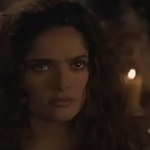Phoebus is not a character in the 1997 version of The Hunchback. He is a featured extra who has a few lines but has no importance to the plot. So what does it mean for the story with Phoebus not present in the narrative?
First, it means that there is no noble presence in the characters. Nobles played a bit of a role in the book and in some of the movies. The Film gets around this a little by making the King a slightly bigger character. Not as big as the 1939 version but he gets few lines. There is also the King’s minster who is the Frollo kills.
It also means Frollo anger isn’t targeted in regards to his lust for Esmeralda. Instead Frollo is being challenged by the minister who is all for the Printing Press. with his resolved weaken Frollo yearns for Esmeralda and when he can’t get her, he kills the minster. And because Frollo used Esmeralda dagger she gets the blame.
This weakens the core of the story as Esmeralda has no reason to kill the minster, unless you count the one line he says dismissing Gypsies as not real people. But the movie doesn’t make bring that up in her trial, so their interaction is nonexistence. It also robs the intensity from Frollo’s lust.
Not having Phoebus also changes Esmeralda’s character. With no other love interest, Esmeralda doesn’t not come off a childish and flighty which suit a standard strong-independent Hayek role well.
Can a Hunchback story take place without Phoebus? I suppose it can but I would say that the 1997 version is not a model for how to do it. The killing the minster plot is a weak and sloppy.
Next time – A little by more on the characters
Follow thehunchblog

